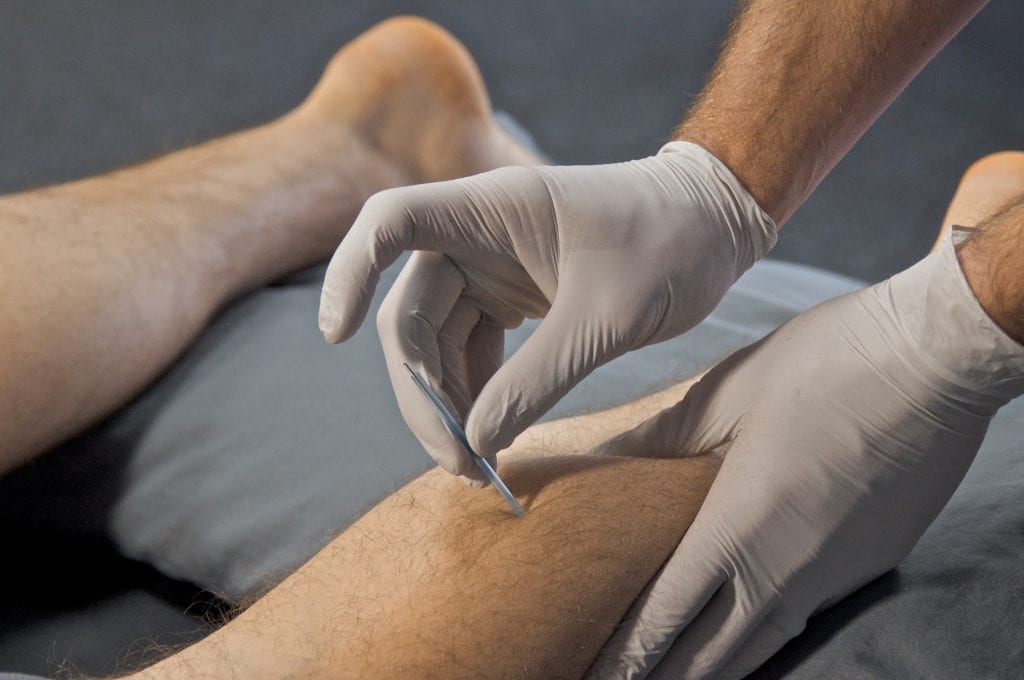Dry Needling is a technique that is similar to acupuncture. Acupuncture is said to manipulate the flow of energy to promote healing. In contrast, dry needling works directly on painful trigger points in muscles. The technique involves using very thin needles – the width of a human hair – inserted in muscle trigger points to break the pain/spasm/dysfunction cycle. Dry needling can cause minor soreness for a day or so, but is usually not painful. Many patients feel immediate relief with treatment. At Saunders Therapy Centers, dry needling treatment is incorporated into a comprehensive physical therapy evaluation and treatment plan. Expect to receive a thorough musculoskeletal evaluation, and, depending upon what your therapist recommends, manual therapy, exercise, and other interventions to complement dry needling.
Dry Needling Can Be Effective For:
- Low back pain
- Neck pain/headache
- Post-surgical pain
- Rotator cuff injury
- Jaw (TMJ) pain
- Hip pain
- Heel pain
Please read our Dry Needling Billing Policy prior to scheduling your appointment.

Research
Several research studies have shown promising results with dry needling. An example is this study on Disc-related Low Back Pain in the Journal of Research in Medical Sciences:
Fifty-eight patients were randomized into control and experimental groups. The control group received typical, good-quality physical therapy interventions. The experimental group received the same treatment, with the addition of dry needling techniques to myofascial trigger points found in affected low back and hip muscles. Both groups benefited, but the study found a much greater benefit to pain intensity and disability in the group that also received dry needling.Our treatment philosophy includes:
- Musculoskeletal Evaluation: A thorough evaluation will be performed to assess for muscle imbalances, myofascial restrictions, joint dysfunction, and nerve involvement. A specific plan of care will then be developed. If you are seeing us after a surgery, we work closely with your physician to restore range of motion, strength and function safely.
- Manual Therapy: Our therapists have advanced training in manual therapy which is a hands-on approach that addresses restrictions in the soft tissue, myofascial system, and/or joints to facilitate a healing environment.
- Physical Modalities: Modalities, such as heat, cold, ultrasound, and electrical stimulation are used to help with pain control as needed, but are soon replaced by a focus on progressive exercise and functional activities.
- Exercise and Return to Function: At the appropriate point in your treatment, exercises and functional activities will be progressed as tolerated. You will do many of these activities at home or at a health club with rechecks as necessary to progress you safely back to full function. Each patient’s plan of care is individualized to what is needed for the best outcome possible.
